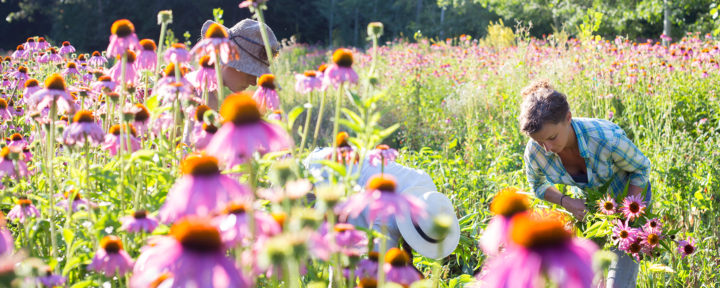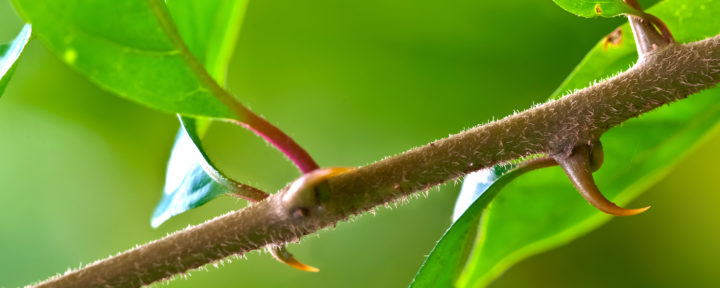We love talking about herbs and herbalism, and we especially love answering your questions about those topics. That's why we brought in our team of herbal experts to respond to some of the most common questions and concerns we hear.
Our herbalists have decades of combined experience working with herbs — and the people who take them. They answer your most pressing questions, in our regular column “Ask an Herbalist.”
Herbal Preparations
Maceration: Maceration is a method of making extractions. It’s the process of soaking the herb or plant matter in the menstruum, or solvent, for a period of time that varies based on the ingredients. Maceration allows a menstruum to soak up an herb’s constituents. The process is complete when the liquid inside an herb is the same strength as the liquid outside.
Marc: Marc is what’s left over after maceration and extraction into a menstruum. For example, marc could be the herbs in a soaked tea bag or those that were used to make a tincture or elixir after they have been pressed and separated from the liquid extract.
Menstruum or Solvent: The liquids used to extract an herbal preparation are called the menstruum, or solvent. Depending on the preparation and the herbs used, the menstruum could be water, alcohol (ethanol), vinegar, glycerin or any combination.
Percolation: Percolation is a method of extraction. The process involves filtering a menstruum through finely powdered, dried herbs that have been packed into a cone-shaped percolator. The herb is traditionally moistened with a small amount of menstruum for 12 to 24 hours to allow for in-cone maceration and expansion. After, the remaining menstruum is poured over the herbs and the liquid extract slowly drips out, as gravity pulls the menstruum down through the herb.
This marc — left over from extracting (from left) Horse Chestnut (Aesculus hippocastanum), Ashwagandha (Withania somnifera) and Cat's Claw (Uncaria tomentosa)— will be added to our compost pile on the farm.
Herbal Forms
Cordial: Cordials are made by combining herbs (often fresh herbs or fruit juices) with alcohol, such as brandy. The mixture is then left to macerate. After the herbs are strained, an equal amount of sweetener is added.
Decoction: A decoction is a water extraction that uses a continuous heat supply, usually a simmer of 10 to 60 minutes. This technique is typically used for denser herb parts, such as roots, bark, seeds, berries and mushrooms.
Elixir: An elixir is a type of sweetened herbal preparation. Elixirs start with tea or herbs to which alcohol (usually brandy) is added. The herbs are removed after the mixture soaks (this is called maceration), and finally a sweetener (traditionally honey or sugar) is added, usually with some essential oil.
Essential Oil: Essential oils are the highly concentrated, volatile oils extracted from a plant. Most often, essential oils are extracted using steam distillation.
Flower Essence: Flower essences contain the “essence” of a plant and are extremely diluted before use. The flowers are infused in water, most often under the sun, and then preserved with a small amount of alcohol or glycerin, to create what is called the “mother essence.” That essence is further diluted to create a “stock bottle.” The stock bottle is then used in drop-size amounts multiple times daily in a bottle of water over the long term.
Glycerite: Glycerites start with dried or fresh herbs infused in a menstruum that is glycerin-based. Water may be included in the menstruum. A glycerite can also be referred to as an “alcohol-free extract.”
Hydrosol: Hydrosols are the water by-product of the steam distillation of essential oils. They are often used as sprays or as a base for other topical herb forms.
Infused Oil: These are often used on their own as topicals or as a base for other forms of herb-based topicals. Dried or fresh herbs are infused into a carrier oil, such as Olive, Sesame (not toasted) or Jojoba. The infusion can be warmed over low heat or allowed to macerate at room temperature for a certain amount of time. The herbs are strained out and the remaining liquid is what’s used. The infused oil can then be used as a base for salves, balms, lotions or creams. Fixed or fatty oils (such as Avocado oil, Hemp seed oil or Coconut) can also be infused with culinary herbs that are taken orally and used in cooking.
Infused Vinegar: Infused vinegar is the liquid remaining after dried or fresh herbs have been extracted into vinegar and the marc has been pressed and removed.
Infusion: An infusion is a tea made by pouring water over plant material, then allowing it to steep for 3 to 20 minutes. Infusions usually involve more delicate parts of the plant such as dried flowers, fruit, leaves or other parts, though fresh plant material may also be used. The water is usually freshly boiled, but you can also make cold infusions. Infusions are considered one of the oldest and simplest preparations used in herbalism.
Liniment: Liniments are used topically and rubbed into the skin. They can vary in consistency from watery to thick, such as a balm. They are made from herbs extracted in any substance that is liquid at body temperature, including alcohol, soap or, less commonly, oil.
Mel: Mels are made of honey infused with dried or fresh herbs, which can either be removed by straining or (if powdered first) stirred into the mixture.
Oxymel: Oxymels are a subcategory of mels. The name comes from oxymeli in Latin, meaning acid and honey. Equal parts vinegar and honey, and sometimes water, are infused with dried or fresh herbs, macerated, then strained. They are the herbal version of a shrub, a vinegar-based drink generally made from fruit.
Poultice: Herbal powders can be moistened slightly with warm water to create a paste called a poultice, which is then applied topically. Poultices can also be made with fresh herb material that is blended with a small amount of water.
Syrup: Syrups are made with herbal tea and sweetener (usually sugar, but honey or other sweeteners can be used). The ratio of tea to sweetener can be equal or 1:2.
Tincture: Tinctures start with dried or fresh herbs infused in a menstruum that is alcohol-based. Water or a small amount of glycerin may be included in the menstruum.
These trays of Alfalfa (Medicago sativa) will soon be prepared for extraction. We follow a specific protocol for each herb, tailored to its individual constituents and uses.
General Terms
Adaptogens: Adaptogens are a category of herbs known for their balancing effects, and they support our bodies’ natural responses to stress, fatigue and more.* Their actions let you take them over long periods and as a rapid response to short-term situations.* Some common adaptogens are Ashwagandha (Withania somnifera), Holy Basil (Ocimum tenuiflorum), Schisandra (Schisandra chinensis) and Rhodiola (Rhodiola rosea).*
Aromatherapy: Aromatherapy uses natural plant extracts, such as aromatic essential oils, and sometimes hydrosols and carrier oils.
Phytochemicals or Constituents: “Phyto-” means “plant,” so “phytochemicals” are chemicals produced by plants. These chemical compounds or constituents are formed in a plant’s normal metabolic processes. Phytochemicals are often referred to as primary or secondary metabolites, depending on their purpose in the plant. There are several classes, including alkaloids, anthraquinones, coumarins, fats, flavonoids, glycosides, gums, iridoids, mucilages, phenols, phytoestrogens, tannins, terpenes and terpenoids.
Tonic: Tonics are herbs that are gentle enough to be taken daily for long-term dietary support. Common tonics include Maca (Lepidium meyenii), Stinging Nettle (Urtica dioica), Turmeric (Curcuma longa) and Reishi mushroom (Ganoderma lingzhi).




